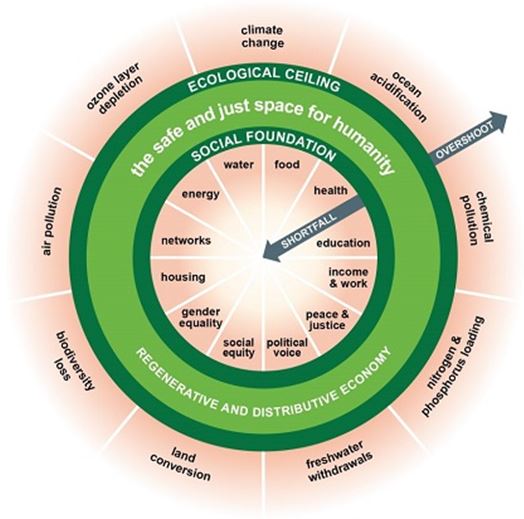New Institutions: Where to Start
In the book by Stephen D. King, Grave New World: The End of Globalization and the Return of History, reviewed in the previous blog post on Fifty Year Perspective, the author asked, “For globalization to work, nation states need to accept reductions in sovereignty for the greater good. But who decides what is the greater good?”
Kate Raworth, an economist at Oxford University, takes on this challenge with a concept she calls Doughnut Economics in a recent book by that title. She criticizes economists’ uncompromising focus on GDP growth for giving short shrift to the more important objective of equitably improving world-wide living conditions. The goal she sets for economic theory is to “turn economies that need to grow, whether or not they make us thrive, into economies that thrive, whether or not they grow.”
Approaching the challenge from an economic perspective one cannot but conclude that mainstream economic theory is ill-equipped to address challenges to instability which can be attributed to global inequality and failure to confront long-term impacts of climate change.
Raworth’s concept derives from a diagram of concentric circles representing social and ecological limits within which humanity must live. The Social Foundation (inner ring) represents the limit beyond which humans suffer deprivations such as hunger and illiteracy. The Ecological Ceiling (outer ring) represents the limits of ecological sustainability. The “safe and just space for humanity” lies between the rings. Raworth uses this concept to set long-term goals for humanity, and then policies to achieve them. The doughnut fosters new ways of thinking… “it helped invigorate old debates and instigate new ones, while offering a positive vision of an economic future worth striving for.”
Seven “ways to think” set the stage for addressing a sustainable future. The first is to vacate GDP growth as a goal, substituting it with “meeting the human rights of every person within the means of our life-giving planet.” Second, see the big picture; place the economy in the context of society, and society in the context of the earth. Third, “nurture human nature:” cultivate characteristics accepting of interdependence, sharing, and openness to change. Fourth, adopt dynamic analysis, thinking in terms of a system. Fifth, reverse inequality, redistributing wealth as well as income. Sixth, consider the entire life cycle of materials, both natural and man-made, once products are consumed. Finally seventh, “Be agnostic about growth…. Design an economy that promotes human prosperity whether GDP is going up, down, or holding steady.”
Raworth puts forth a demanding program for achieving both equality, the doughnut’s inner ring, and sustainability, the outer ring.

